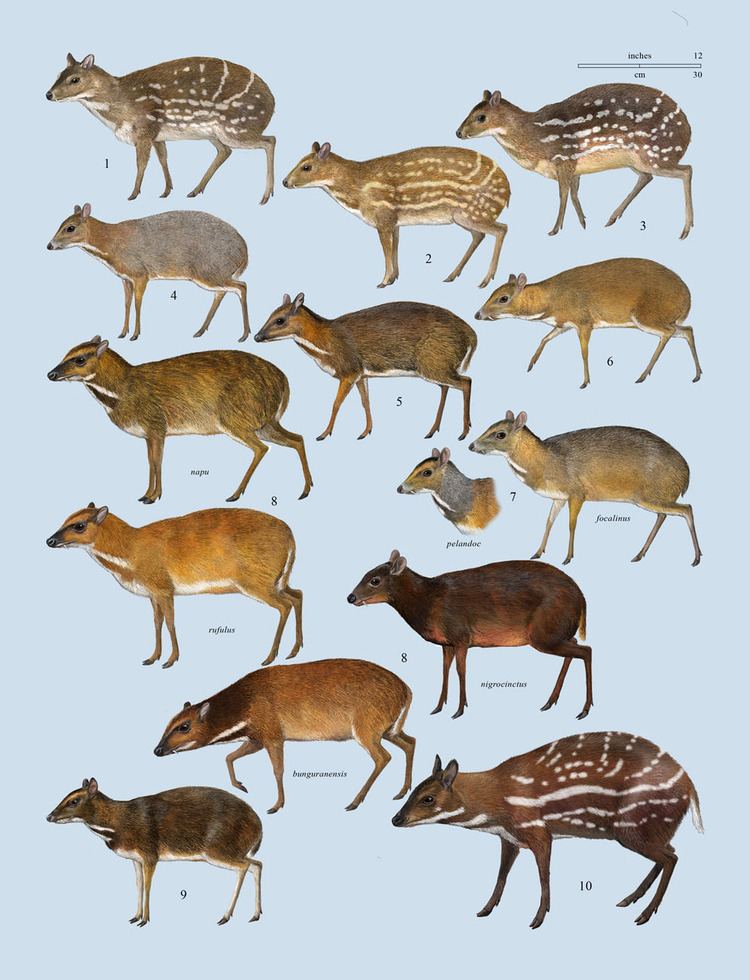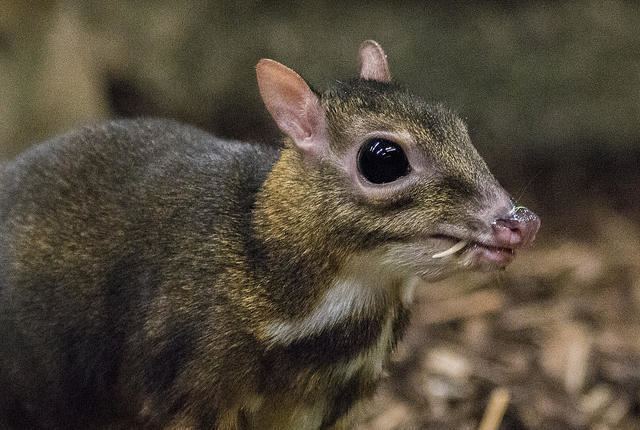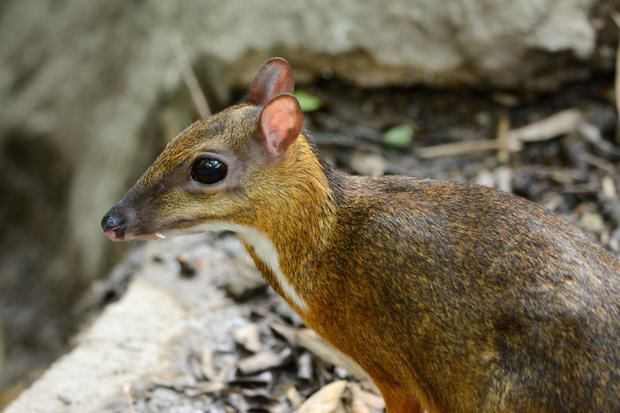Scientific name Tragulidae | Higher classification Ruminantia | |
 | ||
Lower classifications Lesser mouse‑deer, Tragulus, Java mouse‑deer, Philippine mouse‑deer, Sri Lankan spotted chevrotain Similar Ungulate , Tragulina , Tragulus | ||
Lesser chevrotain
Chevrotains, also known as mouse-deer, are small ungulates that make up the family Tragulidae, the only members of the infraorder Tragulina. The ten extant species are in three Genera, but several species also are known only from fossils. The extant species are found in forests in South and Southeast Asia, with a single species in the rainforests of Central and West Africa. They are solitary or live in pairs, and feed almost exclusively on plant material. Depending on exact species, the Asian species weigh between 0.7 and 8.0 kg (1.5 and 17.6 lb), and include the smallest ungulates in the world. The African chevrotain is considerably larger at 7–16 kg (15–35 lb).
Contents
- Lesser chevrotain
- Honey badger narrates water chevrotains are adorable crowned eagles are nasty
- Etymology
- Biology
- Taxonomy
- Ancient chevrotains
- References

Honey badger narrates water chevrotains are adorable crowned eagles are nasty
Etymology
Chevrotain is a French word that means "little goat".

The single African species is consistently known as "chevrotain". The names "chevrotain" and "mouse-deer" have been used interchangeably among the Asian species, though recent authorities typically have preferred chevrotain for the species in the genus Moschiola and mouse-deer for the species in the genus Tragulus. Consequently, all species with pale-spotted or -striped upper parts are known as "chevrotain" and without are known as "mouse-deer".

The Telugu name for the Indian spotted chevrotain is jarini pandi, which literally means "a deer and a pig". In Kannada, it is called barka (ಬರ್ಕ), in Malayalam, it is called khooran, and the Konkani name for it is barinka. The Tamil term is சருகு மான் sarukumāṉ "leaf-pile deer".

The Sinhalese name meeminna roughly translates to "mouse-like deer". This was used in the scientific name of the Sri Lankan spotted chevrotain, M. meminna.
Biology

The family was widespread and successful from the Oligocene (34 million years ago) through the Miocene (about 5 million years ago), but has remained almost unchanged over that time and remains as an example of primitive ruminant form. They have four-chambered stomachs to ferment tough plant foods, but the third chamber is poorly developed. Though most species feed exclusively on plant material, the water chevrotain occasionally takes insects and crabs, or scavenges meat and fish. Like other ruminants, they lack upper incisors. They give birth to only a single young.
In other respects, however, they have primitive features, closer to nonruminants such as pigs. All species in the family lack antlers and horns, but both sexes have elongated canine teeth. These are especially prominent in males, where they project out on either side of the lower jaw, and are used in fights. Their legs are short and thin, which leave them lacking in agility, but also helps to maintain a smaller profile to aid in running through the dense foliage of their environments. Other pig-like features include the presence of four toes on each foot, the absence of facial scent glands, premolars with sharp crowns, and the form of their sexual behaviour and copulation.
They are solitary or live in pairs. The young are weaned at three months of age, and reach sexual maturity between five and 10 months, depending on species. Parental care is relatively limited. Although they lack the types of scent glands found in most other ruminants, they do possess a chin gland for marking each other as mates or antagonists, and, in the case of the Water chevrotain, anal and preputial glands for marking territory. Their territories are relatively small, on the order of 13–24 hectares (32–59 acres), but neighbors generally ignore each other, rather than compete aggressively.
Some of the species show a remarkable affinity with water, often remaining submerged for prolonged periods to evade predators or other unwelcome intrusion. This has also lent support to the idea that whales evolved from water-loving creatures that looked like small deer.
Taxonomy
Traditionally, only four extant species were recognized in the family Tragulidae. In 2004, T. nigricans and T. versicolor were split from T. napu, and T. kanchil, and T. williamsoni was split from T. javanicus. In 2005, M. indica and M. kathygre were split from M. meminna. With these changes, the 10 extant species are:
Ancient chevrotains
The six extinct chevrotains genera include:
and may include
The Hypertragulidae were closely related to the Tragulidae.
